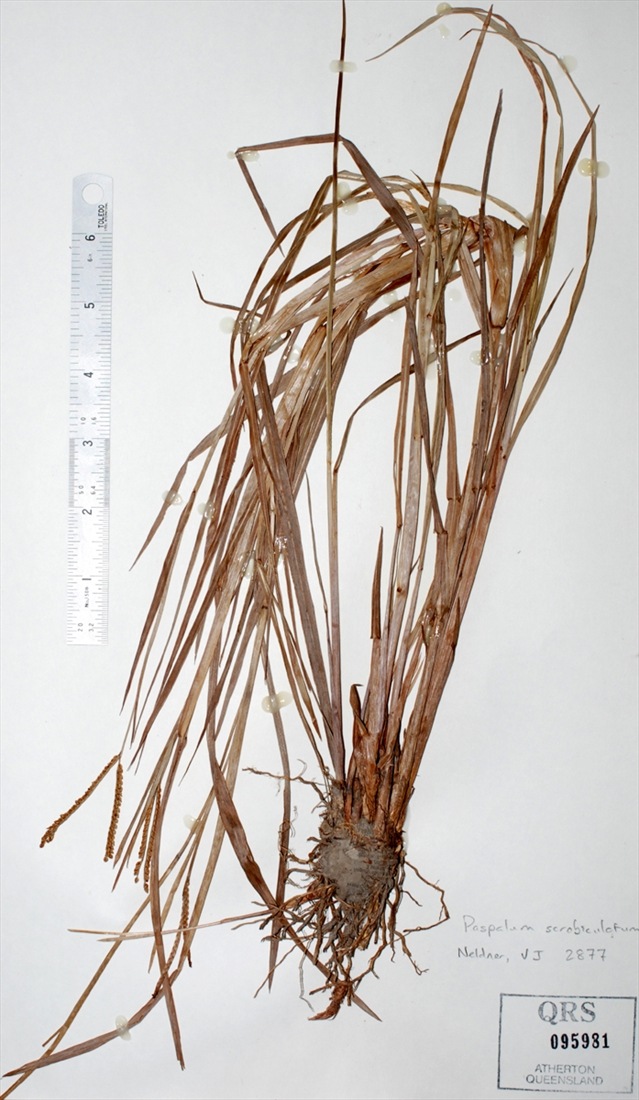Australian Tropical Rainforest Plants - Online edition
Paspalum scrobiculatum L.

Linnaeus, C. von (1767) Mantissa Plantarum 1: 29. Type: India.
Scrobic
Perennial mat forming or sometimes tufted, with the culms 30-90(-150) cm tall, erect or decumbent and rooting at the lower nodes.
Leaf-blade 5-40 cm long, 3-15 mm wide, margins scabrous. Leaf sheaths compressed, keeled, mostly shorter than adjacent culm internode, glabrous, outer margin glabrous; Ligule an erosed membrane, 0.4-3 mm long with a dense fringe of hairs behind it and long hairs on the shoulders.
Inflorescence consists of 2-5(-8) racemes, subdigitate or on a short axis; racemes 3-10 cm long, ascending to widely spreading, base densely pubescent; spikelets usually single, overlapping in 2 rows, sometimes paired especially in the middle of the raceme; rachis ribbonlike, 1.5-3 mm wide, winged with sharp-edged midrib, margins scabrous, base of rachis with dense short darker coloured hairs. Spikelets green becoming brown, suborbicular, ovate or broadly elliptic, 2-3 mm, glabrous, obtuse to apiculate; upper glume membranous, 3-7-veined, glabrous; lower lemma 3-5(-7)-veined; upper lemma brown at maturity, subequaling spikelet, coriaceous, finely striate, obtuse.
Features not available.
Occurs in WA, NT, CYP, NEQ, CEQ and southwards to south-eastern New South Wales. Altitudinal range from near sea level to 840 m. Grows in disturbed areas and sometimes along streams and swampy areas in rainforest, sclerophyll forest, swamp forest, Eucalypt forest, Melaleuca forest, Melaleuca woodland, Eucalypt woodland, riparian woodland, in grassland and sedgeland. Also from Africa, Temperate Asia, Tropical Asia, new Guinea, the Pacific Islands and from South America.
A palatable grazing grass.





